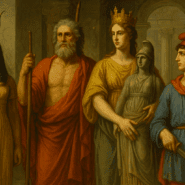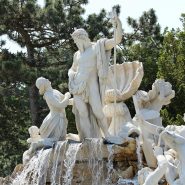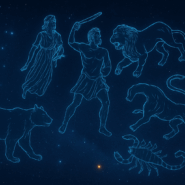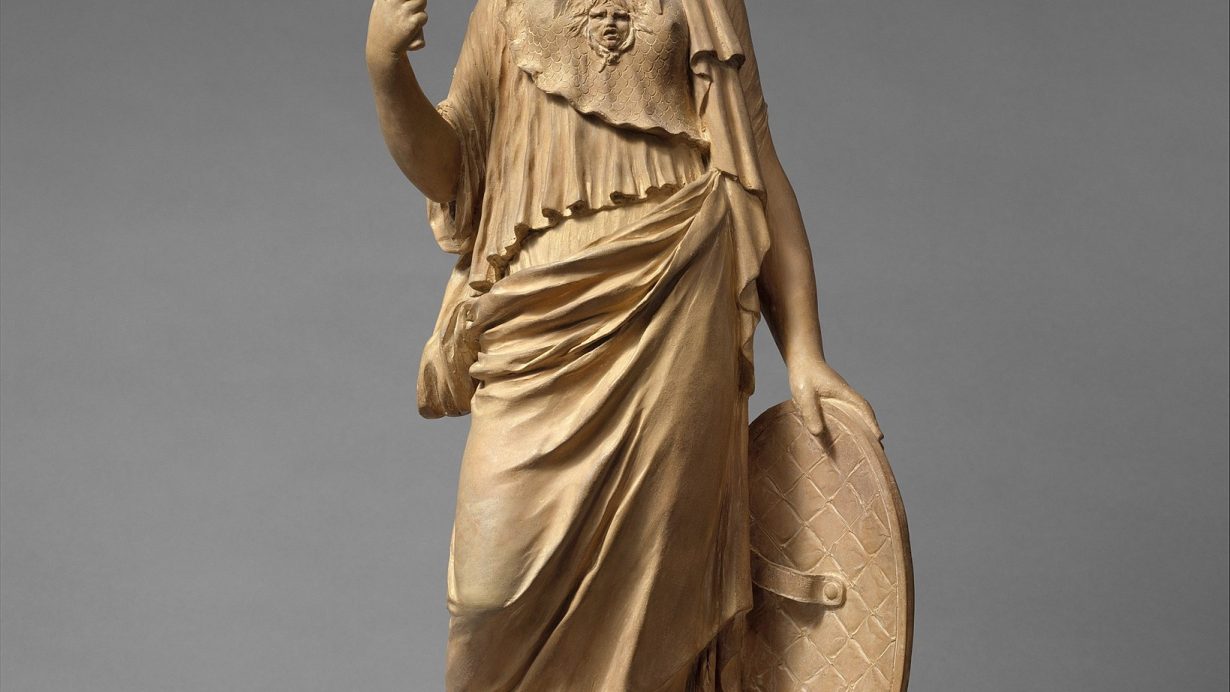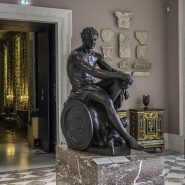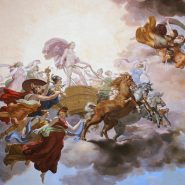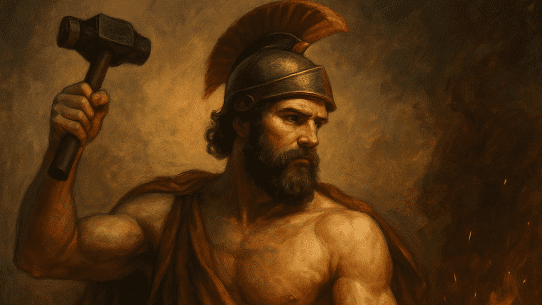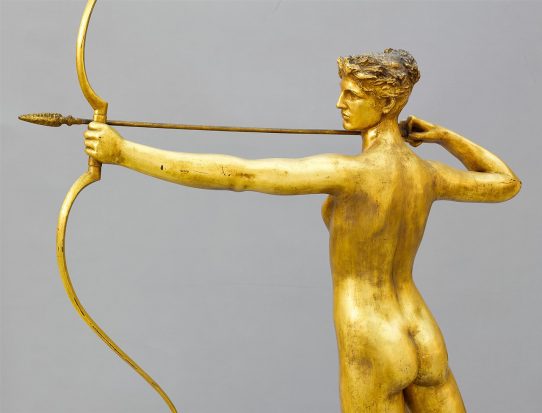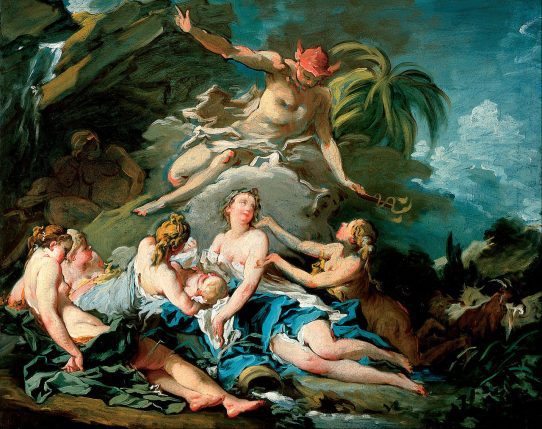Minerva, the radiant goddess of wisdom, strategy, and the arts, stood among the most revered figures in Roman mythology. She embodied intellect and skill in every form — the wisdom of rulers, the ingenuity of craftsmen, the insight of philosophers, and the courage of warriors guided by reason.
To the Romans, Minerva represented the highest expression of the human mind aligned with divine purpose. She was both scholar and soldier, patroness of invention and protector of civilization. In her, intellect was not abstract but active — the light of understanding turned toward creation, justice, and progress.
Name and Origin
The name “Minerva” derives from the Italic root mens, meaning “mind” or “intelligence.” Though often equated with the Greek Athena, Minerva’s worship in Italy predated Greek influence, emerging from ancient Etruscan traditions that honored her as Menrva, a goddess of thought and crafts. The Romans adopted her as one of the Capitoline Triad alongside Jupiter and Juno, placing her among the highest divinities of the state.
Unlike Athena, who was more purely martial, Minerva embodied the harmony of intellect and artistry — the divine wisdom that builds rather than destroys, and teaches rather than conquers. She represented not only war’s strategy but also its restraint, not only invention but the virtue that directs it.
Attributes and Symbols
Minerva was depicted as a calm, majestic figure wearing a crested helmet and carrying a shield and spear.
Her armor symbolized not aggression but preparedness, the readiness of wisdom to act when justice demanded. The owl, her sacred bird, represented knowledge and insight, while the olive tree — a gift of peace and prosperity — stood as her emblem of civilized life. The serpent, often seen at her feet, symbolized renewal and the hidden power of reason.
In art, Minerva’s gaze was steady and clear, reflecting intellect unshaken by fear or passion. Every symbol of her being — from the book and spindle to the shield and aegis — testified to her mastery of both mind and matter.
Family and Relationships
Minerva was the daughter of Jupiter, born fully grown and armed from his head after he swallowed her mother, Metis, the goddess of wisdom. Her miraculous birth symbolized the union of thought and power — wisdom springing directly from divine reason.
Unlike many deities, Minerva remained chaste, dedicating herself wholly to knowledge and virtue. She was close to Mercury, with whom she shared the domain of intellect and invention, and she was often invoked beside Mars in times of war as the mind that guides the sword.
Her relationships reflected balance and purpose: she was not moved by passion but by reason, and her loyalty was to justice and enlightenment above all.
Myths and Stories
Minerva’s myths reveal her dual nature as teacher and warrior.
One of her most famous tales tells of Arachne, a mortal weaver who boasted that her skill surpassed the goddess herself. When Minerva challenged her to a contest, Arachne’s tapestry depicted the failings of the gods with perfect artistry. Though impressed, Minerva struck the cloth in anger at the mortal’s pride. Overcome with shame, Arachne tried to end her life, but Minerva transformed her into a spider, allowing her to weave forever. The story served as both a warning against arrogance and a celebration of creative mastery — art as the echo of divine craft.
Another legend tells of Minerva’s aid to heroes. She guided Perseus in slaying Medusa, lending him her polished shield to reflect the monster’s gaze. She inspired Ulysses with cunning and courage during his journey home, and she aided Hercules in his labors with wise counsel.
To the Romans, these stories affirmed her as the divine mind behind every noble act — the intelligence that shapes destiny and redeems strength through understanding.
In another myth, Minerva invented the flute, but upon hearing her reflection while playing, she cast it away in displeasure, teaching that vanity corrupts even the finest gift. Her myths were moral lessons in humility, purpose, and the disciplined use of talent.
Domains and Powers
Minerva ruled over wisdom, learning, crafts, and strategic warfare. She governed all disciplines of the intellect — philosophy, science, medicine, and art — as well as the practical skills that sustain civilization: weaving, building, writing, and statecraft.
As a war goddess, she favored strategy over bloodshed, guiding generals and lawmakers alike toward rational order. Her power was not brute force but clarity of thought — the divine reason that harmonizes conflict and transforms chaos into design. In her temples, artists, scholars, and soldiers alike sought inspiration, for her influence extended from the battlefield to the workshop, from the library to the senate.
Philosophy and Moral Influence
To Roman philosophers, Minerva embodied the intellectual virtue that elevates humanity. She was the living symbol of sapientia — wisdom as moral strength.
The Stoics regarded her as the manifestation of divine reason, the guiding principle that orders the cosmos. She taught that true intelligence is inseparable from virtue: knowledge without integrity is blindness, and strength without wisdom is ruin.
Her name was invoked in schools and councils alike, reminding Romans that power and understanding must walk hand in hand. In Minerva’s light, thought became sacred — an offering to truth itself.
Temples and Worship
Minerva’s worship was widespread across the Roman world. Her most famous sanctuary was the Temple of Minerva Medica in Rome, where she was honored as healer of both body and mind.
On the Aventine Hill stood her temple shared with Jupiter and Juno as part of the Capitoline Triad, symbolizing divine unity of wisdom, power, and governance. Her festival, the Quinquatria, held each March, was celebrated by artists, students, and craftsmen who brought offerings of their tools and works. Schools closed in her honor, and artisans prayed for inspiration and success.
In later centuries, her cult merged with that of Athena, spreading throughout Europe as a symbol of learning and the enlightened arts.
Legacy and Cultural Influence
Minerva’s legacy endures as the eternal emblem of intellect and creativity. Her image adorned Roman coins, libraries, and temples as a guardian of knowledge.
In the Renaissance, she was revived as the muse of science and philosophy, appearing in countless paintings and sculptures as the embodiment of reason. Her owl remains a universal symbol of wisdom, her name invoked in academic halls and artistic societies.
Even the word “mineral” shares her root, a tribute to the ordered intelligence of nature she represented. Through Minerva, the Romans proclaimed that civilization itself is an act of divine thought — and that every act of learning is a form of worship.
Unique Traditions and Notes
Roman artisans and teachers dedicated their work to Minerva, leaving offerings of pens, chisels, and looms in her temples.
Soldiers invoked her before battle for clear judgment, and magistrates before trials for impartial reason. Her priests, known as the Quinquatrus, maintained rituals of purification and dedication to learning. The owl, sacred to her, was never harmed in Rome, seen as her vigilant messenger.
Minerva’s presence was felt wherever discipline met inspiration — in the scholar’s scroll, the soldier’s strategy, and the artist’s brush. She was the divine intelligence that shaped Rome’s greatness, guiding hand and heart alike toward wisdom.
Adapted from public-domain materials, including Project Gutenberg and Wikisource.
